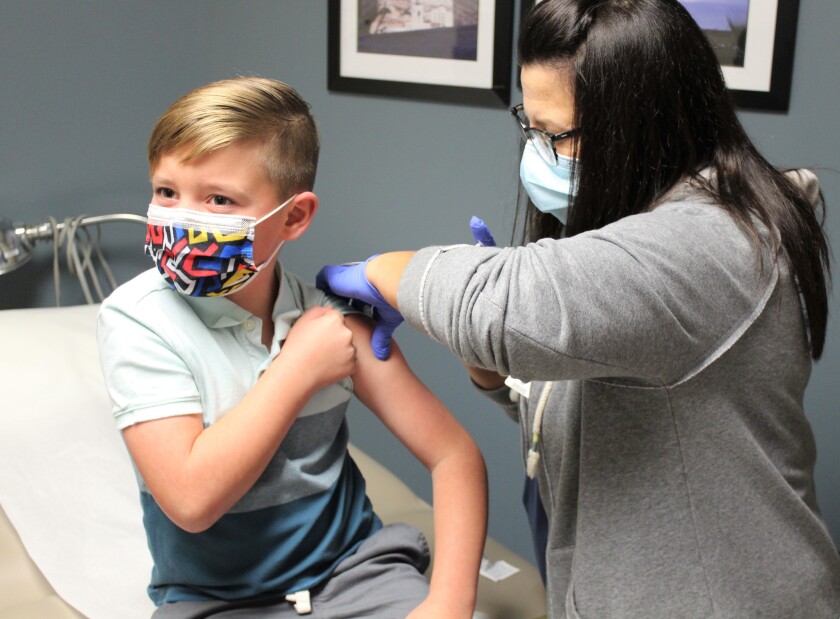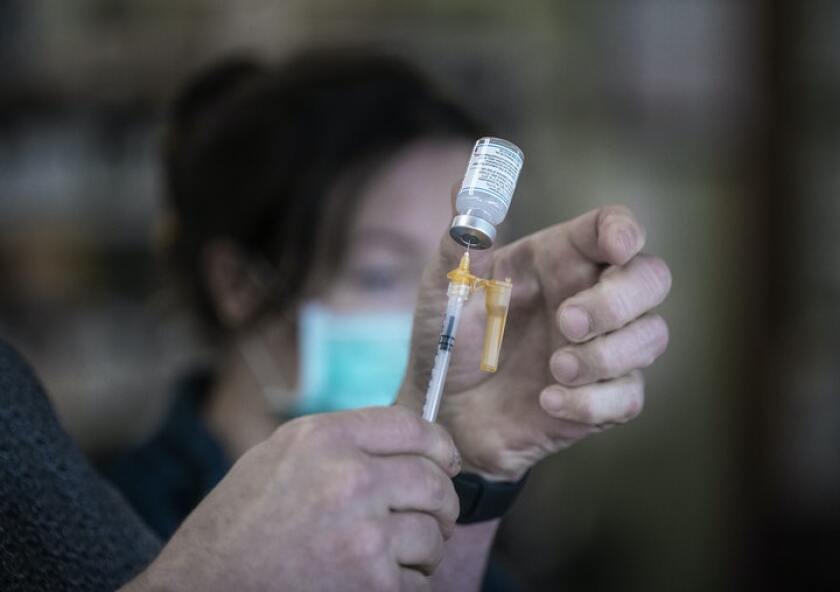ST. PAUL -- Summer is waning, the State Fair is over, schools are back in class ŌĆö itŌĆÖs the time of year when most Minnesotans prepare to settle back into comfortable routines.
Health officials fear the coronavirus pandemic might have other plans.
ADVERTISEMENT
Minnesota, like much of the nation, watched a spring rise in cases turn into a stubborn summer plateau where the rate of infection remained troublingly high.
Outbreak measures have improved in recent weeks, but as more activities move indoors, health officials are bracing for the possibility of another fall surge in cases. Those fears are exacerbated by the highly-contagious omicron strains that drove cases to record levels in January and have been the main cause of infections throughout 2022.
As it has evolved, SARS-CoV-2, the coronavirus that causes COVID-19, has become more infectious and better at evading immunity obtained from vaccines and prior illness. In turn, doctors have gotten better at treating infections, driving down the most severe outcomes and recently adding a new omicron-specific booster.
Those advances are heartening for Minnesota Health Commissioner Jan Malcolm, who urged residents to remain vigilant and continue to do whatever they can to slow the spread of the coronavirus.
ŌĆ£We are hoping for the best as we enter the fall and winter months. However, we are also preparing for a scenario where a surge could take place,ŌĆØ Malcolm said in a statement.
ŌĆ£We have spent much of 2022 putting in place a sustainable response that is ready to adjust at scale to help provide Minnesotans with the tools they need should a significant rise in cases emerge,ŌĆØ she said.
Conflicting signals
Midway through the pandemicŌĆÖs third year, the changing measures of the COVID-19 outbreak have made it trickier to understand how much coronavirus is circulating and the prospects for another surge.
ADVERTISEMENT
One key measure, the number of new infections reported by the state, can no longer be trusted because most people now test at home and those results are not part of the official tally. Health officials estimate the number of new infections could be 10 to 15 times higher than the official new case counts.
Nevertheless, MinnesotaŌĆÖs official rate of new infections has remained above the state Department of Health high-risk threshold for months.
Hospitalizations also remain higher than health officials would like with 422 patients hospitalized with COVID-19 last Sunday including 38 in critical condition. Hospital capacity remains strained throughout much of the state because of staffing shortages.
One bright spot, the COVID-19 death rate has fallen to one of the lowest levels of the pandemic, but the state continues to record several deaths each day.
While fewer severe cases is good news, health officials warn the long-term impact of a COVID-19 infection remains unclear. Anywhere from 30 percent to 50 percent of people sickened by the coronavirus experience some form of ŌĆ£long COVID.ŌĆØ
Staffing an ongoing concern
Another surge in cases could easily overwhelm institutions like schools and hospitals that are already strained.
Most schools entered the new year of classes facing unprecedented staffing shortages. Hospitals in the Twin Cities and Twin Ports just witnessed the largest private-sector nursing strike in the nation with staffing shortages a key issue for nurses seeking a new labor agreement.
ADVERTISEMENT
Students returned to school earlier this month hopeful for a normal year after the last two were upended by the pandemic. However, the close quarters of schools, low vaccination rates among children and highly contagious omicron subvariants worry health experts.
Furthermore, most coronavirus mitigation measures like masking and social distancing have been abandoned. Health officials fear that could lead to a resurgence of other illnesses like influenza.
Dr. Nipunie Rajapakse, a pediatric infectious diseases physician at the Mayo Clinic, said it was important for parents to get their kids vaccinated against COVID-19 and to get a flu shot.
ŌĆ£Vaccine uptake has been much lower than we had hoped for in the school-aged children group,ŌĆØ Rajapakse said, noting that vaccines are safe and good at preventing serious illness. ŌĆ£Since thereŌĆÖs not really a downside to it, itŌĆÖs very well tolerated in kids, so we are encouraging parents to get their kids vaccinated.ŌĆØ

Any widespread surge in cases could have a devastating impact on schools and hospitals. Last year, Gov. Tim Walz had to call out the National Guard and hire temporary workers to keep hospitals running.
═ß═ß┬■╗Łs are in a similar predicament ŌĆö a national survey found nine out of 10 districts had 10 percent or more of their positions vacant as classes began. Any widespread absences could leave schools scrambling to cover key jobs.
ŌĆ£ItŌĆÖs going to be a bumpy ride this fall,ŌĆØ said Denise Specht, president of Education Minnesota, the state teachers union. ŌĆ£I think, from a pandemic perspective, schools are very fragile right now, particularly because they are short staffed in so many job categories.ŌĆØ
ADVERTISEMENT
Funding dwindling
Minnesota enters the third fall of the coronavirus pandemic largely on its own when it comes to financial support. So far, Congress has failed to approve new resources to continue to respond to the pandemic and some federal efforts, including free tests by mail, are running out of money.
Minnesota got $73 billion in federal aid from the five different coronavirus response bills Congress approved during the first two years of the pandemic. But much of that, roughly $53 billion, went directly to residents and businesses in the form of economic aid.
A lot of the rest was earmarked for specific uses for schools, cities and counties to deal with the ongoing fallout of the pandemic. Gov. Tim Walz hoped to have $500 million in remaining federal aid at his disposal, but when the Legislature adjourned in May it had only set aside about $150 million for the pandemic fight.

Nevertheless, the stateŌĆÖs efforts to provide free at-home tests, vaccines and boosters continue.
ŌĆ£With the suspension of the federal mail order tests, Minnesota will continue to ensure access to free at-home rapid test kits for Minnesotans,ŌĆØ Walz said in a statement Wednesday when he announced residents could order another round of tests.
ŌĆ£The free tests are just one part of the stateŌĆÖs comprehensive testing and vaccination program to provide readily available COVID-19 protection services across the state,ŌĆØ Walz said.








